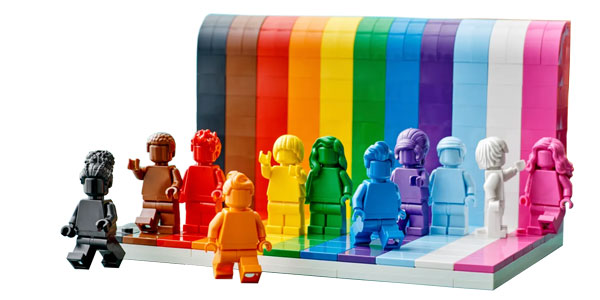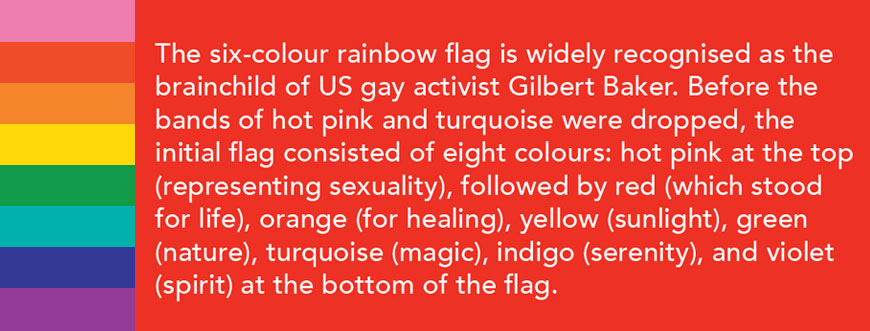Monetising Pride
- Andile Ndlovu
Responsibility and representation: Where does the buck stop for brands and business sales targeting the LGBTQIA+ community?

October was Pride Month in SA and, as has become the norm, brands and establishments went out of their way to lure buyers and to cash-in on the festivities. Despite the absence of a Pride parade for the second year running due to pandemic restrictions, businesses still launched pop-up events welcoming queer patrons. In Johannesburg, particularly, establishments including Liquid Blue in Melville, the Shakers Bar in Maboneng, and Boulevard Lifestyle Lounge in Midrand were sites for much revelry.
However, subsequent conversations swiftly switched to the lack of or the need for increased safety around these spaces. Criminals have been targeting unsuspecting queer revellers outside these establishments for their valuables. Indeed, a voice clip purported to be between two such criminals trading secrets on how to rob queer revellers of their smartphones in and around Durban, was circulated on social media in an effort to encourage more vigilance. Questions have rightly been asked as to whether businesses truly care or simply see this community as a market ripe for the picking.
Of the myriad of stereotypes about the LGBTQIA+ community in this country, one that has snowballed in recent years pertains to the spending power of queer people.
The myth of the pink purse
The concept of the ‘pink economy’ or ‘pink money’, which describes the purchasing power of the LGBTQIA+ community, has grown significantly in recent years as acceptance (slowly) grows across societies. The upshot is twofold: firstly, there’s an increasingly visible and powerful yet relatively untapped market for brands to target, but there is also the peddling of a perception that queer people are gaudy high-earners with vast disposable income in a country where the majority of the population cannot make ends meet.
A 2019 survey measuring the attitudes of non-LGBTQIA+ Americans to exposure of LGBTQIA+ people and images in the media by Procter & Gamble and the Gay and Lesbian Alliance Against Defamation found that companies benefit from including LGBTQIA+ people in advertisements, with the vast majority of non-LGBTQIA+ consumers looking favourably upon companies that do so.
Brands in the pink
Hence the exploitation of this audience by brands – with some embarrassing or harmful effects. From former US President Donald Trump’s grossly queerphobic administration selling “Make America Great Again” hats printed in Pride colours, toymaker LEGO’s Everyone is Awesome campaign in which it produced an LGBTQIA+ LEGO set to celebrate diversity, to local jeweller Galaxy & Co. launching a limited-edition tote bag to support the Triangle Project (a Cape Town-based organisation that challenges homophobia, transphobia and intersexphobia, while appreciating sexual, gender and bodily diversity), and even The Body Shop urging its shoppers to sign a petition supporting the Equality Act in the US – there have been some hits and misses.
The commercialisation of Pride Month, opportunistic or otherwise, is no longer the objective of just a handful of brands. There is a sense that it is not only a way of realising a sales boom, but also earning a positive brand image, thereby increasing brand loyalty. Research shows that consumers are likelier to support brands that they perceive to be in their corner.

Whose pride is it anyway?
According to Dr Katlego Disemelo, Associate Lecturer in Media Studies at Wits, whose Master’s dissertation titled Black Men as Pink Consumers? A Critical Reading of Race, Sexuality and the Construction of the Pink Economy in South African Queer Consumer Media, and whose doctoral research was on drag queen pageantry and performances of gender in Johannesburg, it is almost impossible to “examine or discuss any brand in terms of authenticity” in this context
“A more salient aspect to this discussion is a critical awareness of the fact that the very notion of a ‘pink economy’, which was pioneered in the Global North in the early 90s, is much more of a marketing ideal than a tangible, sociological, and/or economic phenomenon,” says Disemelo.
“Arguing from a specifically contextual point of view, South Africa’s economy and socioeconomic structures are far too fragmented and fluctuating to accommodate a ‘neat’ application of this Western term in the South African context.”
In a country like SA where the marginalisation of women and queer people persists, there remains a need for brands and agencies to take more responsibility for raising awareness around equal rights, and for changing societal misperceptions about sexual minorities by committing to purposeful marketing, instead of just cashing in on the queer. Consumers are exceedingly perceptive (not to mention diverse in how they identify) and will take their monies elsewhere when they sense that they are being exploited.
“The branding and commoditisation of various Pride marches, events, and social movements remains problematic and exclusionary,” adds Disemelo. “The transnational branding of ‘Pride’ is inevitably connected to the erasure and underrepresentation of black and other queer communities of colour. This then begs the analytical question: Whose pride are we speaking about? Who is represented and who gets to shout at the tops of their voices (or buy branded commodities) in the name of ‘Pride’?”
- Andile Ndlovu is a freelance writer.
- This article first appeared in?Curiosity, a research magazine produced by?Wits Communications?and the?Research Office.
- Read more in the 13th issue, themed: #Gender. We feature research across disciplines that relates to gender, feminism, masculinity, sex, sexual identity and sexual health.
